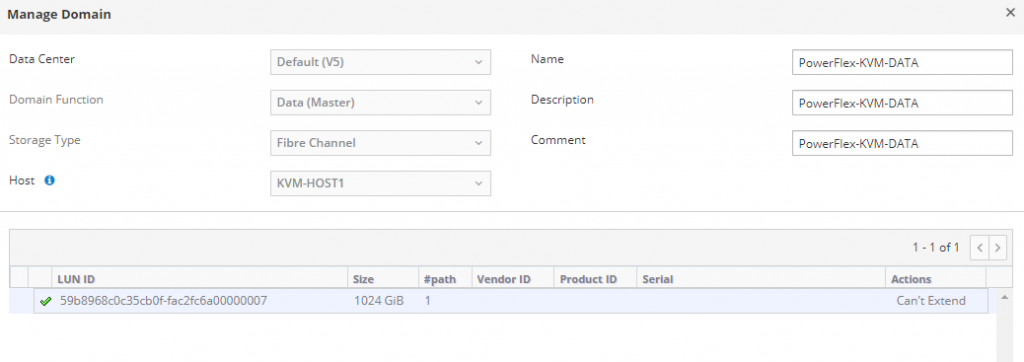For many of us out there, running VMware as the only hypervisor is quite expensive. Especially when using a SDS type of storage solution, such as PowerFlex, or legacy ScaleIO.
In this post, will contain pointers and gotchas, which require modification to successfully deploy.
Configuration of Engine & KVM Hosts
- For this deployment, a standalone server/VM was used, not a self-hosted Engine
- On the Engine Deployment, if using CentOS or RHEL8.x
- Enable the codeready repo else install will fail on enablement of
yum module enable javapackages-tools
- To fix enable the codeready repo, even if its enabled, seems to be a bug
subscription-manager repos --enable=codeready-builder-for-rhel-8-x86_64-rpms
- Enable the codeready repo else install will fail on enablement of
- PowerFlex does not yet, as of 3.6.0 support SecureBoot, so ensure that is disabled in the UEFI/BIOS.
- Ensure your nodes have Virtualization Support Enabled and SR-IOV
- Ensure you install the repo on any KVM Compute Host, else install will fail
yum install https://resources.ovirt.org/pub/yum-repo/ovirt-release44.rpm
- Add to the
/etc/multipath.confa blacklist entry for the local sdX devices (local storage)devnode "sd[a-b]$"
- Also add to
/etc/multipath.confa blacklist exception for the scini (PowerFlex Block Devices)blacklist_exceptions {
devnode "scini"
}
- Then map a PowerFlex volume to you KVM Host nodes, and it will appear as a valid Fibre Channel device for your data Storage Domain.
